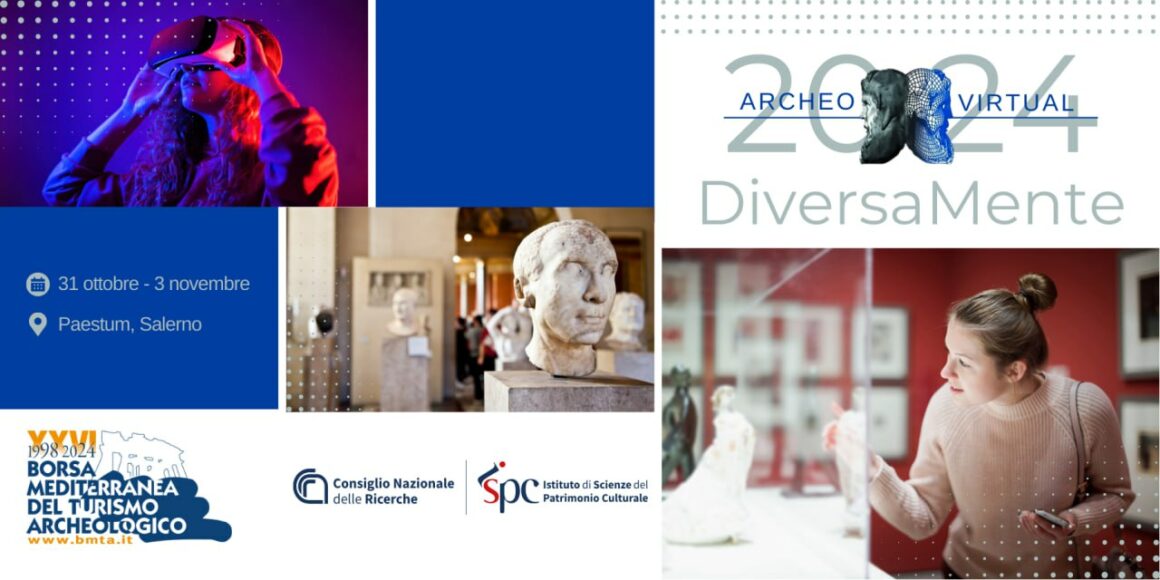The ArcheoVirtual Exhibition is divided into two parts: an audiovisual section, in which videos relating to projects of particular originality, innovation and importance are projected; and a section dedicated to interactive applications, where the public is called to interact firsthand with technologies and multimedia contents.
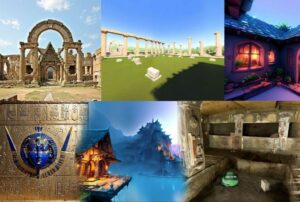
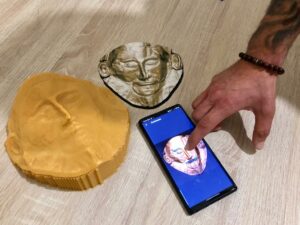
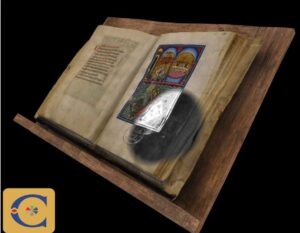
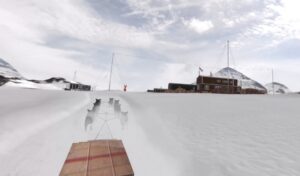
Interactive Section
- TANGENT (Collettivo Digitale)
Tangent is the multisensory solution designed to enrich the user experience of all visitors. It allows people with visual or hearing disabilities to have full access to finds, artifacts and architectural reconstructions thanks to a tactile interface and custom-made multimedia content. It can be enjoyed into museums, exhibitions or training itineraries, stimulating inclusion and full accessibility.
Tangent invites users to interact with original three-dimensional objects or 3D printed reproductions. Interaction with the narrative contents occurs via sensors, buttons and sensory paths on the tangible interface, guiding blind users towards the active areas. The multimedia narrations are accompanied by subtitles and sign language to facilitate access for deaf people. Special tactile and Braille legends provide useful information at the user station, such as the types of materials of the objects and the reproduction scale.
- TORRE GUEVARA VR Experience (Provincia di Potenza, Comune di Potenza, Effenove srls)
Torre Guevara VR Experience is a journey in a “chrono-air balloon”, a hot air balloon capable of flying back in time, which tells us the history and evolution of the early medieval Tower of Potenza, seat of the powerful Aragonese family in the historic center of the city, from 1621 onwards. Produced in Virtual Reality using Meta Quest 3 and created to work with high-performance PC graphics, the project also offers the possibility of learning about the ancient buildings of the place through Augmented Reality.
- BRANCACCI POV (Comune di Firenze, CNR ISPC)
Brancacci POV is a research prototype, based on the Aton open source framework of the CNR ISPC, and was developed for the Municipality of Florence as part of the Brancacci Project, coordinated by CNR ISPC, with the collaboration of the Opificio delle Pietre Dure, the Superintendency of Archaeology, Fine Arts and Landscape for the Metropolitan City of Florence and the provinces of Pistoia and Prato and thanks to the funding of Friends of Florence and Jay Pritzker Foundation.
The visitor, wearing a visor, will be transported to the heart of Florence, inside the Brancacci Chapel, in the church of Santa Maria del Carmine, jewel of the Florentine Renaissance, and will be able to explore it to discover the stories hidden behind the frescoes painted by Masaccio, Masolino and Filippino Lippi.
- ARKAEVISION HISTORY: La Reggia di Caserta (Digitalcomoedia Srl, CNR ISPC, Parchi Archeologici di Paestum e Velia e Reggia di Caserta)
Arkaevision History is the declination of the Arkaevision* platform dedicated to the representation of historical events and the stories connected to them, paying attention to the digital creation of historical characters, with particular emphasis on realism and their distinctive features, combining a mode of passive use of the contents, typical of documentaries, to a new and more engaging immersion in history.
Arkaevision History: Royal Palace of Caserta is an experiential path made up of four activities linked to some of the major points of interest present in the Gardens of the Royal Palace of Caserta. These experiences are designed to be enjoyed sequentially during a guided tour, helping the public connect with the history of the monument they are visiting.
* Arkaevision is an integrated digital platform with different ways of enjoying Cultural Heritage, an augmented experience that does not replace but supplements classic enjoyment, that uses innovative enabling technologies such as Virtual and Mixed Reality. The development of the platform was completed thanks to dialogue with research bodies such as the CNR ISPC, and major cultural attractors such as the Archaeological Park of Paestum and the Royal Palace of Caserta.
- ESPERIENZA IMMERSIVA NEI PAPIRI DI ERCOLANO (Università di Pisa, Biblioteca Nazionale di Napoli “Vittorio Emanuele III”, CNR ISPC)
In the Villa dei Papiri in Herculaneum, dating back to the 1st century BC, numerous writings of Greek philosophers were inscribed in papyrus rolls, preserved to our days by carbonization thanks to the eruption of Vesuvius in 79 AD. The papyri, stored in the National Library ‘Vittorio Emanuele III’ of Naples, were exhibited for approximately 270 years from their discovery, which occurred between 1752 and 1754, to the decay of time. The EU Greekschools project aims to address this problem by producing open collections of digital images of the papyri obtained with advanced techniques, making them accessible online through a new open-source web platform, with a single flexible and user-friendly interface and advanced search capabilities.
At ArcheoVirtual 2024, the papyri can be explored through the latest generation 360° viewers which reproduce for spectators the specific way in which papyrologists study them, during reading and autopsy transcription. The visitor to ArcheoVirtual will therefore be able to move among the letters written by ancient philosophers and the folds of carbonized papyrus, in a unique experience open to the general public for the first time.
- BRAINFRIEND (iinformatica srl)
Brainfriend is an innovative system based on Artificial Intelligence to tell contents to users following the language of accessibility. Thanks to the use of generative Artificial Intelligence, it is therefore possible to facilitate the use of contents according to one’s age (child/adult) and cultural level.
Brainfriend lends itself to the understanding of journalistic, scientific and especially Digital Heritage content. In fact, each work of art is narrated in an accessible and personalized way. With Brainfriend, starting from the single work it is also possible to discover information regarding the artist, the historical context, the possible date and place of discovery and other curiosities. This module is also integrated into scenarios of use of content in Virtual Reality and in the Realverse: the metaverse of sustainability.
- VIRTE – Virtual Extended Experiences (Direzione Regionale Musei Piemonte – Soprintendenza; NoREAL interactive srl)
VIRTE “Virtual Extended Experiences” is a brand new “Extended Reality Web-Based” (Web-XR) content generation platform that allows you to generate immersive experiences in Augmented and Virtual Reality: engaging experiences, full of multimedia content of all kinds and with the highest degree of interactivity possible via the web today. It’s easy, therefore effective. It is powerful and inclusive. VIRTE is not an App, so you don’t need to install anything. You frame a QR-Code, point your smartphone and start to explore the surrounding reality, via the browser used for the web: 3D reconstructions, interactive objects, texts, music, animated graphics, traditional and 360° videos, avatar-guides, maps, gallery of images and links to in-depth content. You can insert all kinds of multimedia assets to offer a cultural experience designed in breadth and depth, according to the target users you want, with standard and inclusive layouts. You can also connect VIRTE to Google Analytics to monitor user usage in an extremely in-depth way.
VIRTE has already been exploited to generate experiences for the archaeological sites of Augusta Bagiennorum and Industria (CN), Palazzina di Caccia di Stupinigi (TO), S. Imbenia (SS).
Video Section
- From History to Virtual Reality: Reconstructing the “Auto de Fé of Mani” (1562). (Universidad Anahuac Merida, Missouri State University, Universidad Complutense de Madrid, CNR ISPC, Præteritas Urbes, LLC – Museo Regional de Palacio Cantón – INAH)
A dramatically significant event in the colonial history of the Maya region: the Auto de Fe of Maní, on July 12, 1562. This video shows the results of the reconstruction of the landscape, including the architectural complex of the former convent of St. Michael the Archangel in Maní, with historical characters and settings.
- e-Archeo (Dipartimento di Storia, Disegno e Restauro dell’Architettura Sapienza Università di Roma; Dipartimento di Ricerca e Innovazione Umanistica Università degli Studi di Bari “A. Moro”; Dipartimento di Storia Culture Civiltà Università di Bologna; Dipartimento di Lettere e Beni Culturali Università della Campania “L. Vanvitelli”; Dipartimento di Studi Umanistici Università degli Studi di Foggia; Dipartimento di Studi Umanistici Università degli Studi di Napoli “Federico II”; Dipartimento dei Beni Culturali: archeologia, storia dell’arte, del cinema e della musica Università degli Studi di Padova; Dipartimento di Scienze Umanistiche, della Comunicazione e del Turismo Università degli Studi della Tuscia; Dipartimento di Culture e Civiltà Università di Verona; Scuola Archeologica Italiana di Atene, CNR ISPC)
The e-Archeo project offers a way of reading and digitally valorising 8 archaeological sites distributed throughout the national territory, the result of the presence of different populations and cultures, Etruscan, Greek, Phoenician-Punic, indigenous and Roman: A demo-video is proposed which explains the project and shows a preview of its outputs.
- Foro Emiliano Project (Soprintendenza Archeologia, Belle Arti e Paesaggio per le Province di Frosinone, Latina e Rieti, CNR ISPC)
The Foro Emiliano Project is aimed at the virtual reconstruction of the Roman archaeological area in the heart of Terracina. The video, in addition to the vision of the theater and the surrounding areas in the classical era, offers an overview of the entire Lazio town and the relevant technologies used.
- Il Mito di Diana e Atteone (Digital Comoedia, CNR ISPC, Parchi Archeologici di Paestum e Velia e Reggia di Caserta)
The legend comes to life in a Digital Fiction that traces the story of the goddess Diana and the young Actaeon and the “making of” of the multimedia project.
- Visit Palmanova, the extended city (Metaheritage srl, UNESCO, Regione Autonoma Friuli-Venezia Giulia, I Borghi più Belli d’Italia, Comune di Palmanova (UD)
The video summarizes the multi-channel system created within the Palmanova visitor center, which allows you to visit the city from a single place and dialogue with virtual narrators to delve deeper into some issues related to the creation of the city of Palmanova. The itinerary ends with a journey through time with virtual reality, an immersive mode that allows you to visit the bastions and fortifications through 360° and stereoscopic videos in extended reality, which recreate civil military life in the 1600s. The videos can be accessed via QR code inserted in the city webapp.
